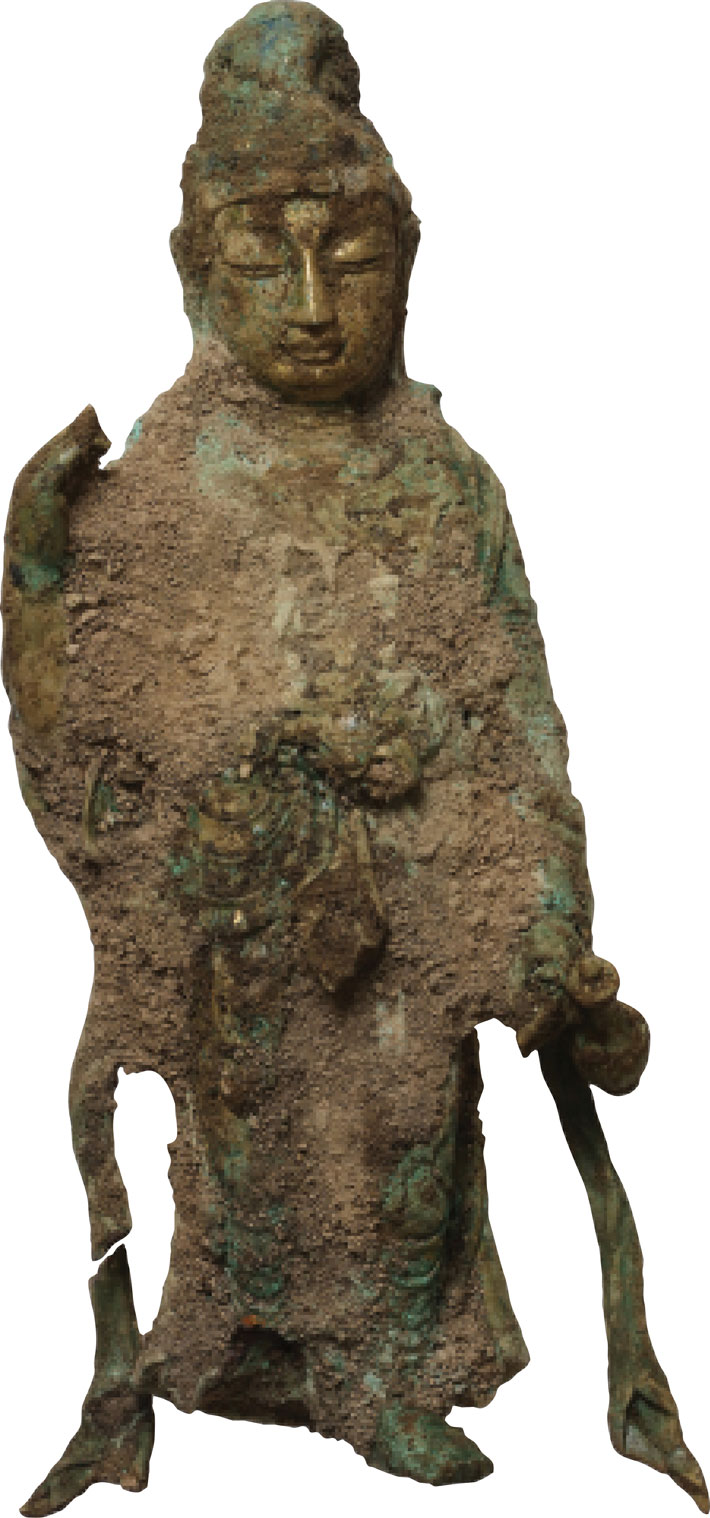Buddha Stands Tall
January/February 2016
 Korean archaeologists have uncovered a ninth-century Buddhist statue from the Unified Silla period (A.D. 676–935) at a temple site in Yangyang County, Gangwon Province. The statue is the largest known Buddha from the era, and also one of the most intricately decorated from the entire Silla Dynasty (57 B.C.–A.D. 935). The gilt-bronze Buddha measures about 16 inches in height, but when the statue is assembled as a complete set, with the mandorla (halo) on top and pedestal on the bottom, it is taller than 20 inches, say researchers at the Hanbit Institute of Cultural Properties. Buddhist statues from this era are usually about half that size. It is also very rare to find gilt-bronze Buddhist statues in Korea that include the mandorla and pedestal.
Korean archaeologists have uncovered a ninth-century Buddhist statue from the Unified Silla period (A.D. 676–935) at a temple site in Yangyang County, Gangwon Province. The statue is the largest known Buddha from the era, and also one of the most intricately decorated from the entire Silla Dynasty (57 B.C.–A.D. 935). The gilt-bronze Buddha measures about 16 inches in height, but when the statue is assembled as a complete set, with the mandorla (halo) on top and pedestal on the bottom, it is taller than 20 inches, say researchers at the Hanbit Institute of Cultural Properties. Buddhist statues from this era are usually about half that size. It is also very rare to find gilt-bronze Buddhist statues in Korea that include the mandorla and pedestal.
Researchers say the way the figure is holding the kundika (the water vessel used in Buddhist ceremonies) is also unusual. The vessel is held by its handle, whereas in most images of Buddha, the figures are holding the vessel by its long neck or mouth. Scholars are currently studying the statue further, and given its artistic and academic value, they expect it to be designated a state treasure.